Uncategorized
The best foraging books in the UK
Recommended books and field guides on foraging and wild food
The past decade has seen a marked increase in our shared interest in wild foods. Foraging is a good way of learning about plants and fungi, encouraging children and adults to take a closer interest in the natural world. Naturalists with an enthusiasm for the history and folklore of plants, chefs improving their menus with local ingredients and families looking for a little extra adventure on their country walks have all raised the demand for good quality guides to our natural larder. This short review describes the best foraging books in the UK for the newcomer and the expert, for home reference, kitchen, foray, or family day out.
Best small format guides
There are two small format pocket guides that would genuinely fit in a forager’s jacket pocket. Collins Gem Food for Free is a reduced version of the classic title by much-loved naturalist Richard Mabey. Particularly suitable for beginners, it contains his warm, readable descriptions and identification notes for just over 100 common edible plants and fungi as well as useful photos to aid identification.
Alternatively, the Bloomsbury Concise Foraging Guide manages to squeeze accurate, brief descriptions and notes for 194 fruits, nuts, seeds, herbs, fungi and shellfish into an almost as diminutive format, each accompanied by characterful artwork to aid identification. This is probably the short guide to choose for slightly more experienced readers.
Best field guides
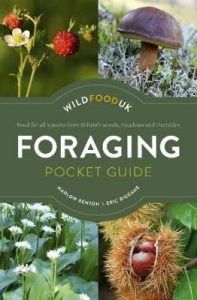 The current leader in this category is the excellent Wild Food UK Foraging Pocket Guide by Renton and Biggane. This excellent guide, suitable for beginners as well as more experienced foragers, contains detailed descriptions and very good identification photographs of over 120 edible plants and fungi, as well as equally clear guidance about those poisonous species that you’ll want to avoid.
The current leader in this category is the excellent Wild Food UK Foraging Pocket Guide by Renton and Biggane. This excellent guide, suitable for beginners as well as more experienced foragers, contains detailed descriptions and very good identification photographs of over 120 edible plants and fungi, as well as equally clear guidance about those poisonous species that you’ll want to avoid.
No review of the wild food literature would be complete without mention of the most well-loved of all foraging guides, the delightfully written and illustrated Food for Free by Richard Mabey. The full version of this classic guide contains engaging and characterful descriptions of 240 wild foods as well as a great many notes on their history and uses.
Best for fungi
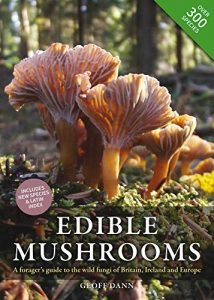 Geoff Dann’s comprehensive Edible Mushrooms is certainly the choice for the fungi enthusiast or expert. It contains excellent, thorough descriptions of over 300 British and Northern European species – including the ones you want to avoid and exactly why you want to avoid them. There are clear colour photographs for each species, tasting notes, and useful introductory chapters on topic such as identification, where to find fungi, and the culture of foraging.
Geoff Dann’s comprehensive Edible Mushrooms is certainly the choice for the fungi enthusiast or expert. It contains excellent, thorough descriptions of over 300 British and Northern European species – including the ones you want to avoid and exactly why you want to avoid them. There are clear colour photographs for each species, tasting notes, and useful introductory chapters on topic such as identification, where to find fungi, and the culture of foraging.
Good initial guides to help beginners who develop a keen interest are Paul Nichol’s Initial Guide to the Identification of Mushrooms & Toadstools and Archie McAdams’s First Steps in Mushroom Identification – both introduce users on how to use keys for identification and are inexpensive.
Best for foodies
Food You Can Forage by Tiffany Francis is a colourful and engaging guide to our common wild food plants, together with 20 recipes for treats such as ‘Dam Sloe Gin’ and puffball risotto. Great for beginners.
An absolute classic, and probably still the top choice for the slightly more adventurous home cook, Wild Food by Roger Phillips has delighted readers for almost 40 years. The most recent edition, revised and updated in 2014, contains over 150 recipes. There are many attractive colour photographs but few identification notes, so make sure you have an identification guide as well if you intend to gather the ingredients yourself.
At the cheffier end of the scale – and definitely with more of a focus on the food than on the plants – Alan Berger’s The Forager Chef’s Book of Flora is an exciting guide to incorporating foraged wild foods into your menu. This book will appeal to adventurous home cooks and to professional chefs looking for wild inspiration. It is focused on North America, but most of the ingredients are also relevant to those of us in Europe, and the many useful notes on technique all apply.
Best for families
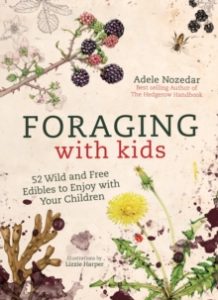 With engaging recipes and interesting notes, Foraging with kids by Adele Nozedar is the one to take on a country walk with your family. 52 common and easily identified species are described, together with fun ideas for their use. Note that the identification notes and pictures are more limited than the other guides described here, so if the adults in your group are beginners it would be a good idea to take one of the other, more serious guides along too.
With engaging recipes and interesting notes, Foraging with kids by Adele Nozedar is the one to take on a country walk with your family. 52 common and easily identified species are described, together with fun ideas for their use. Note that the identification notes and pictures are more limited than the other guides described here, so if the adults in your group are beginners it would be a good idea to take one of the other, more serious guides along too.
Best for the coffee table
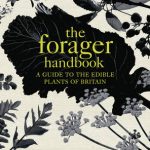 In a slightly larger format, The Forager Handbook by Miles Irving is an attractively presented and warmly written guide to many edible British plants. The book contains many interesting facts and anecdotes about the plants, as well as a number of recipes donated for this volume by celebrated chefs that the author is proud to supply via his foraging business.
In a slightly larger format, The Forager Handbook by Miles Irving is an attractively presented and warmly written guide to many edible British plants. The book contains many interesting facts and anecdotes about the plants, as well as a number of recipes donated for this volume by celebrated chefs that the author is proud to supply via his foraging business.
Honourable mention
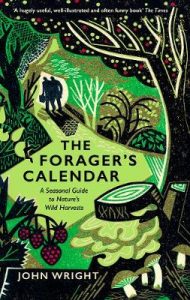 A personal favourite, The Forager’s Calendar by John Wright is an engaging exploration of Britain’s edible foods. Set out as a calendar of the foraging year, this guide contains many of the author’s entertaining anecdotes, tasting notes and tips on identification. A genuinely enjoyable read and excellent inspiration for a foray at any time of year. Recommended.
A personal favourite, The Forager’s Calendar by John Wright is an engaging exploration of Britain’s edible foods. Set out as a calendar of the foraging year, this guide contains many of the author’s entertaining anecdotes, tasting notes and tips on identification. A genuinely enjoyable read and excellent inspiration for a foray at any time of year. Recommended.
Forthcoming
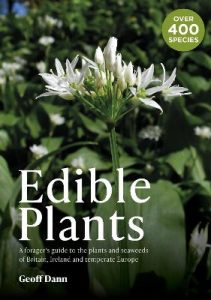 The forthcoming Edible Plants by Geoff Dann looks set to be a great addition to the foraging canon. Geoff is a fungi specialist and foraging teacher and this upcoming title is an extremely comprehensive guide to foraging for plants and seaweeds in north-west Europe. Presented in a similar format to the excellent ‘Edible Mushrooms’, the book will cover over 400 plants including seaweeds, lichens and cyanobacteria. Due out in January.
The forthcoming Edible Plants by Geoff Dann looks set to be a great addition to the foraging canon. Geoff is a fungi specialist and foraging teacher and this upcoming title is an extremely comprehensive guide to foraging for plants and seaweeds in north-west Europe. Presented in a similar format to the excellent ‘Edible Mushrooms’, the book will cover over 400 plants including seaweeds, lichens and cyanobacteria. Due out in January.
Responsible Foraging
All foraging needs to be responsible, respecting our environment and ensuring we do not over-exploit a locality or species. To avoid poisonous or rare species good guides are essential. If in doubt refer to more than one source of information.

